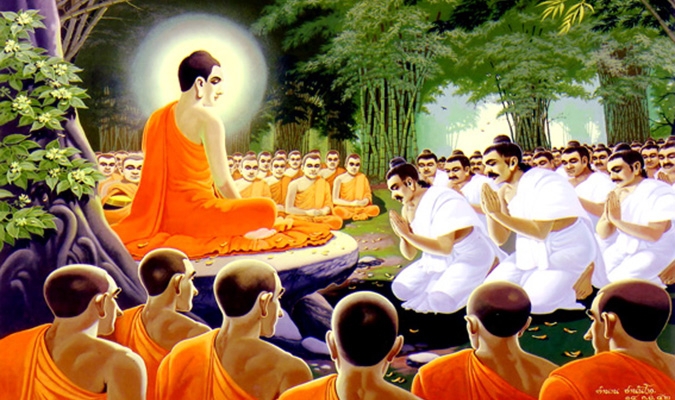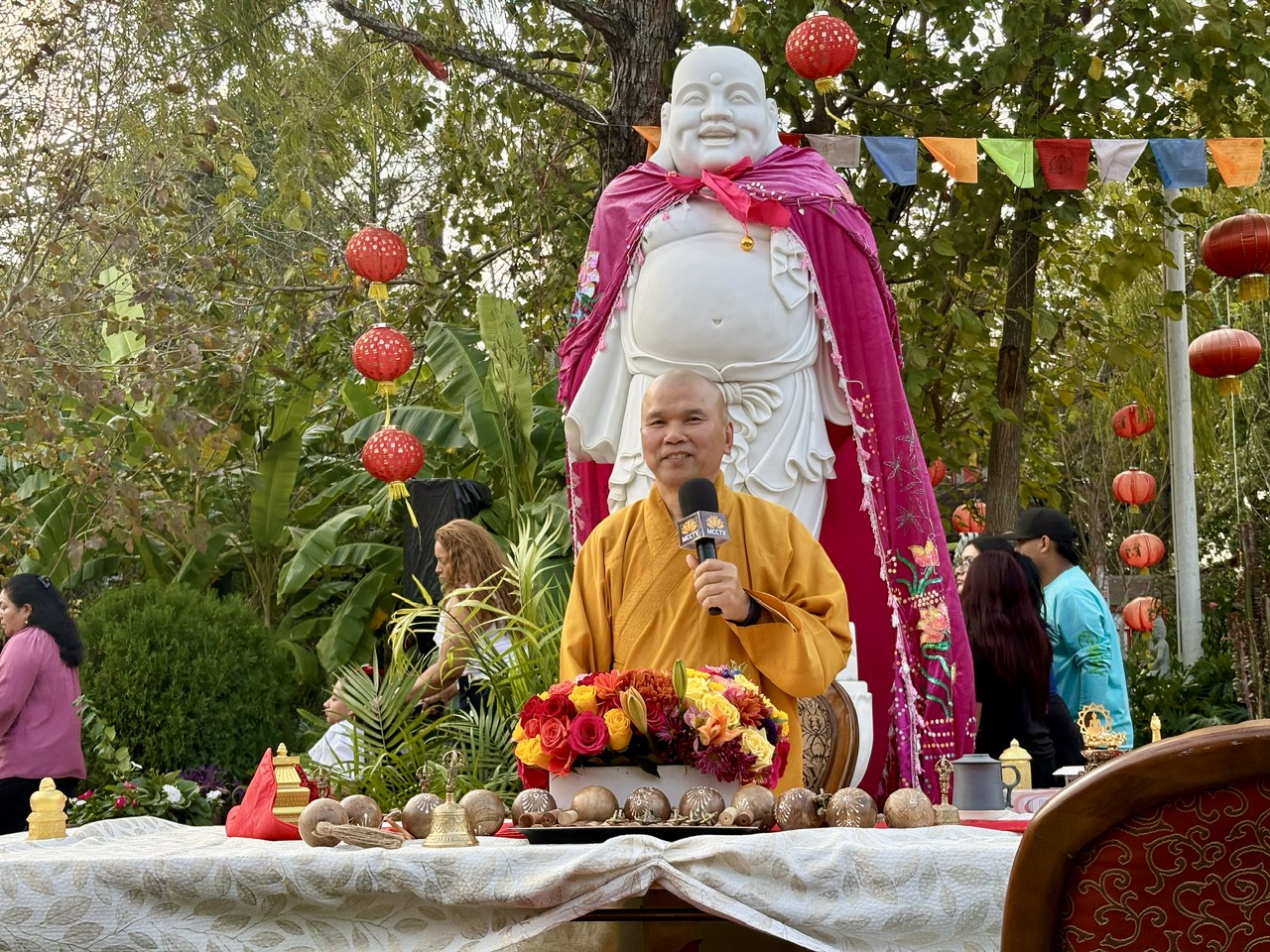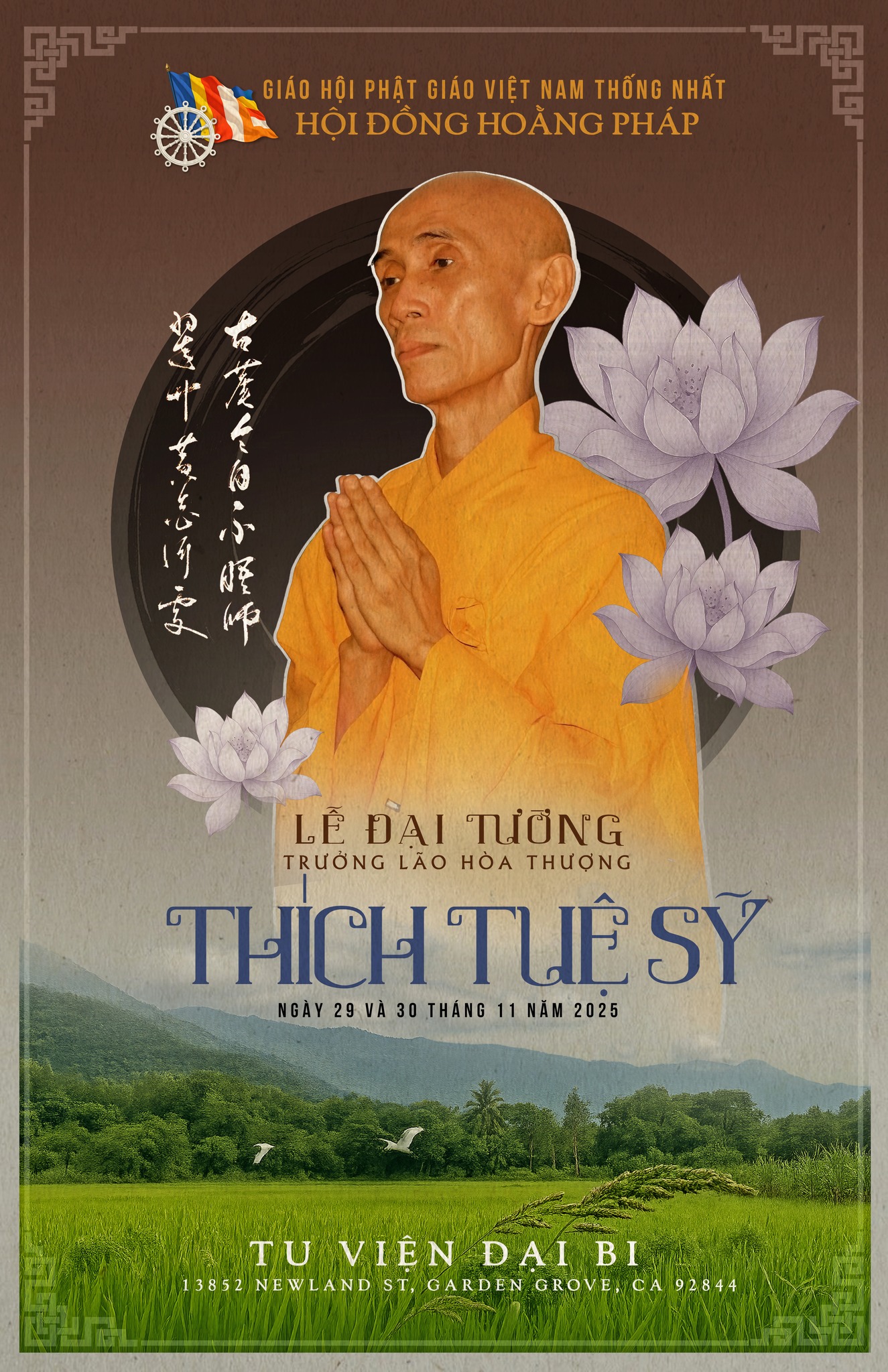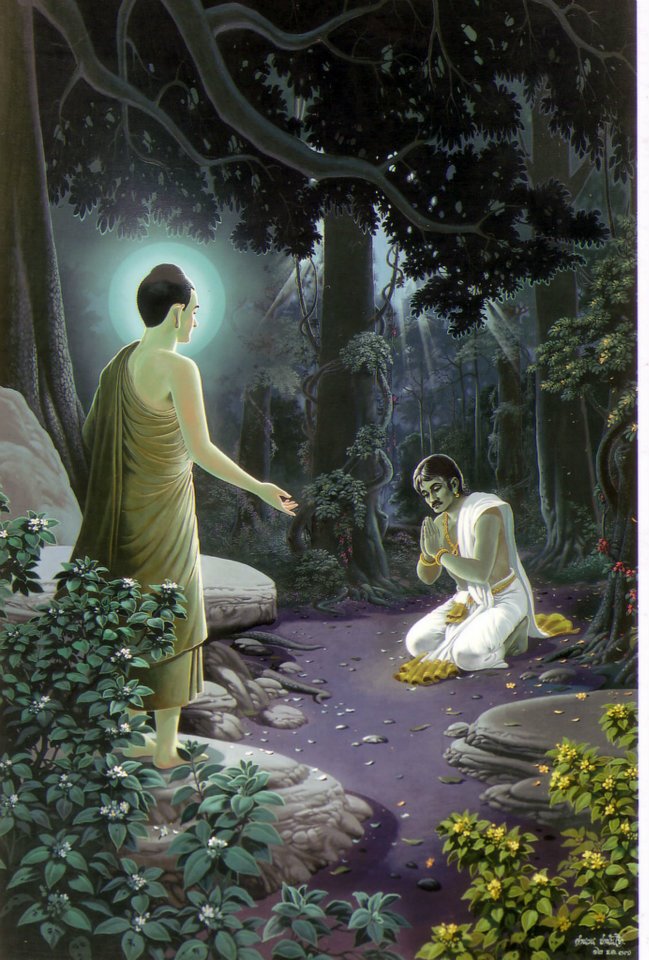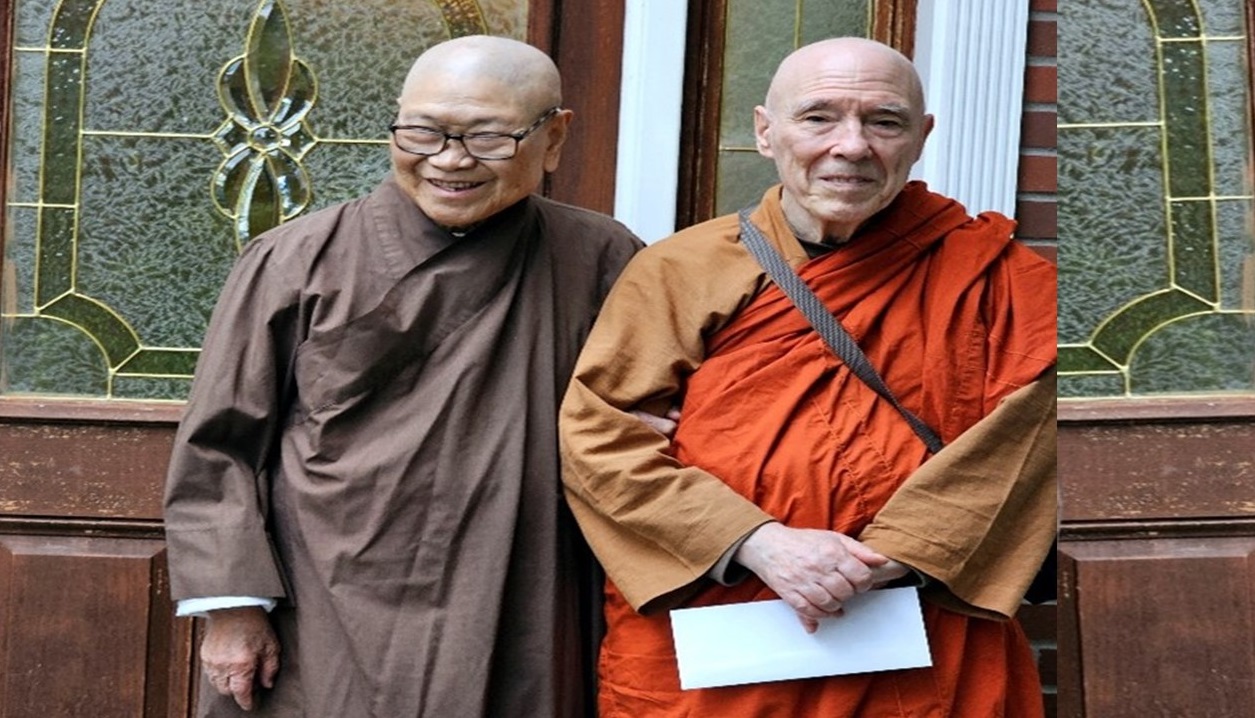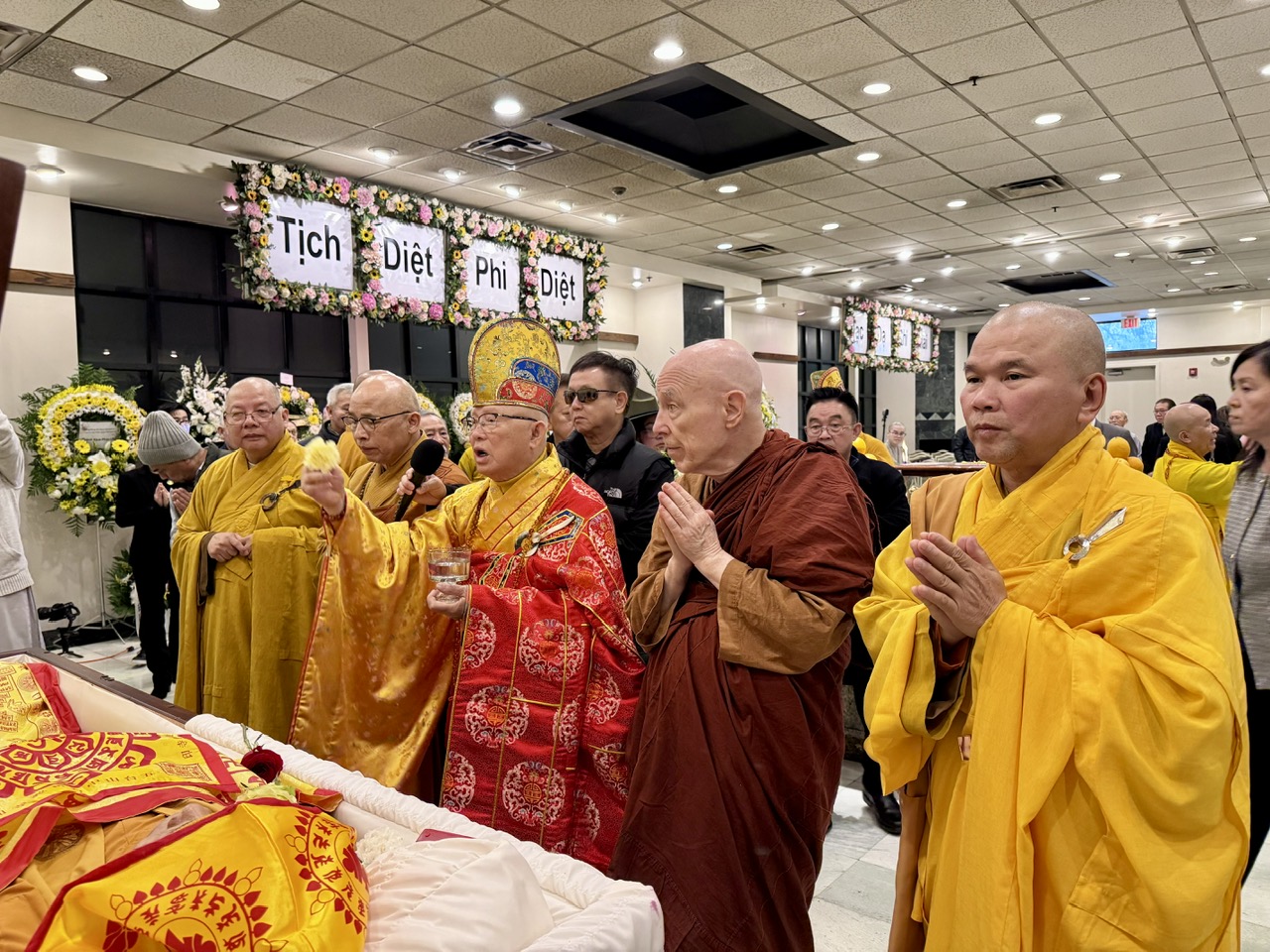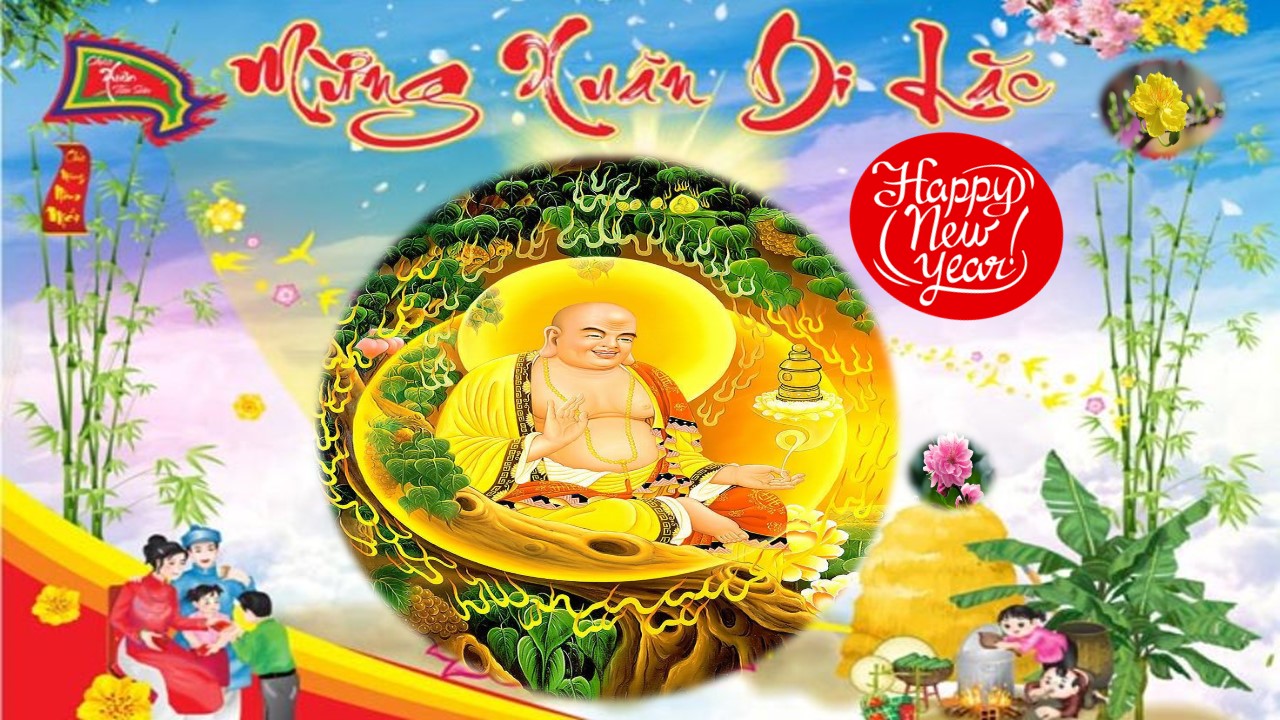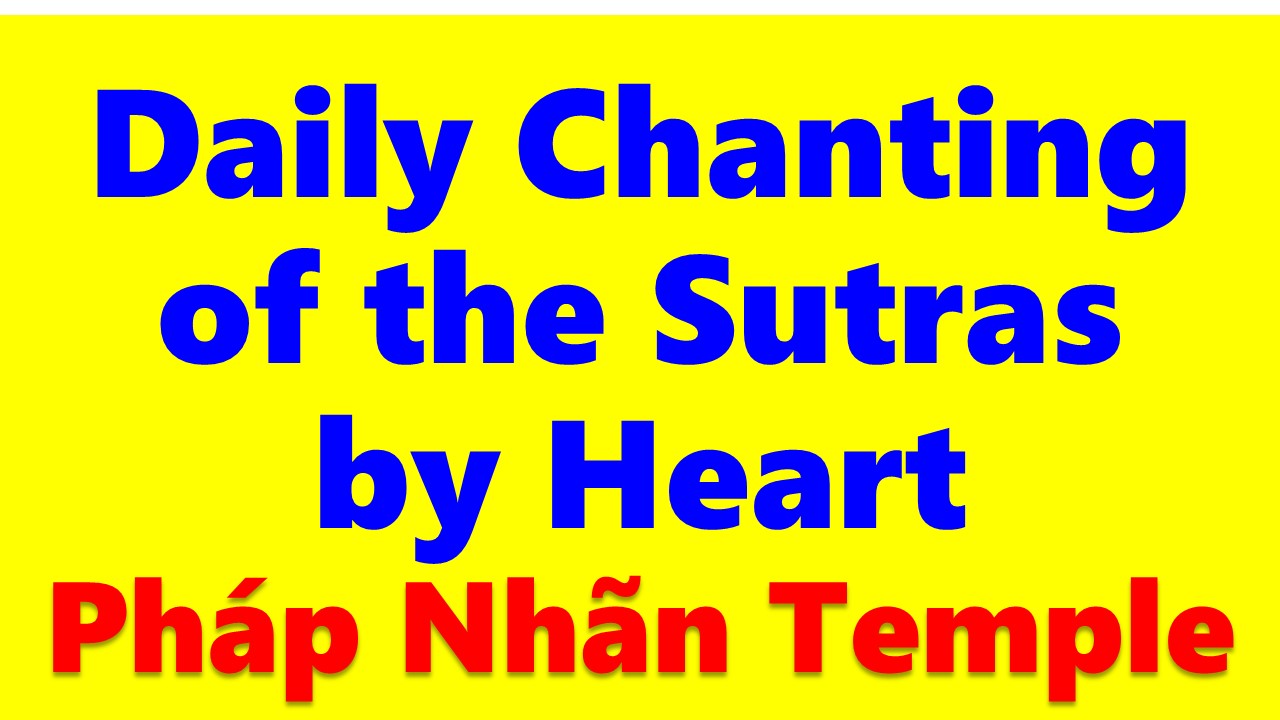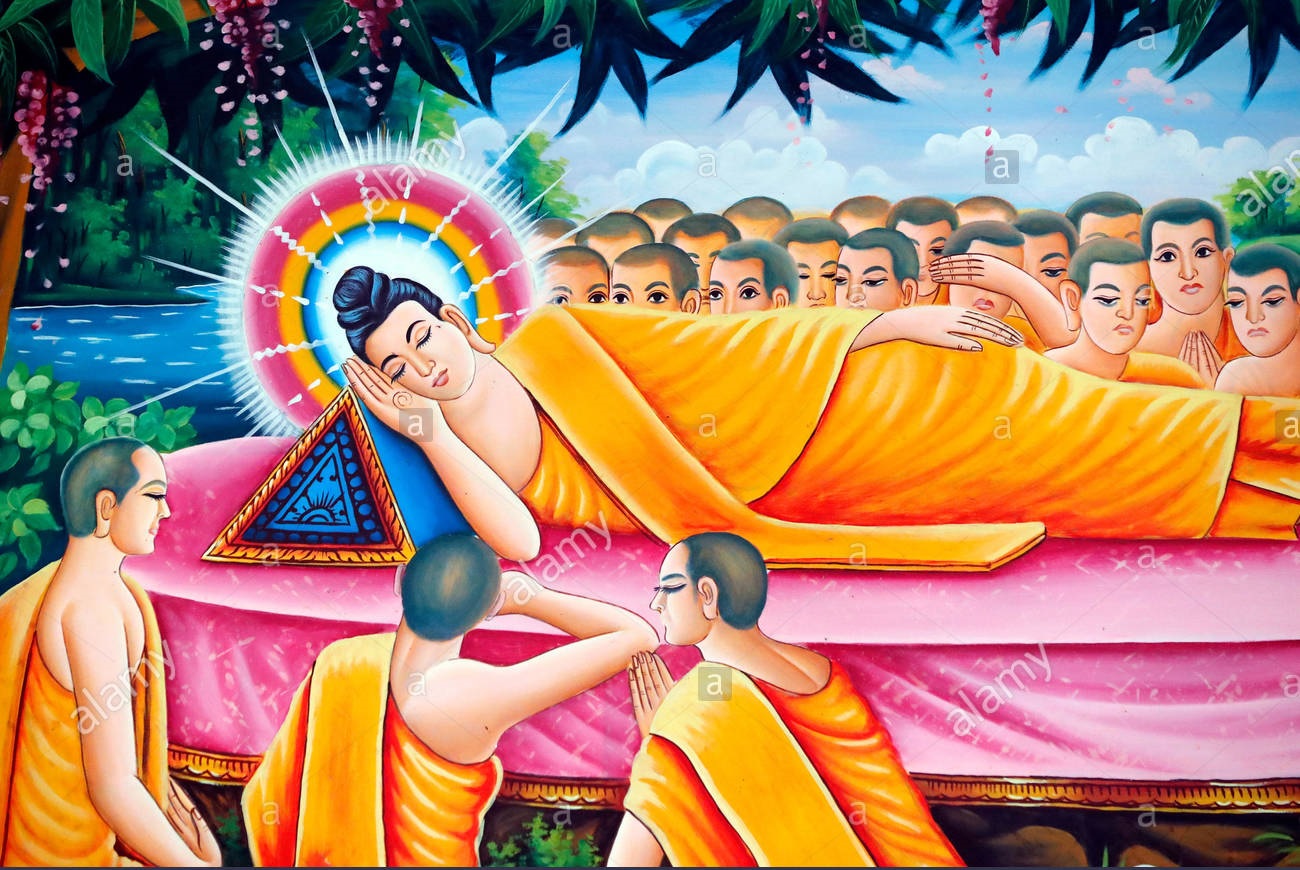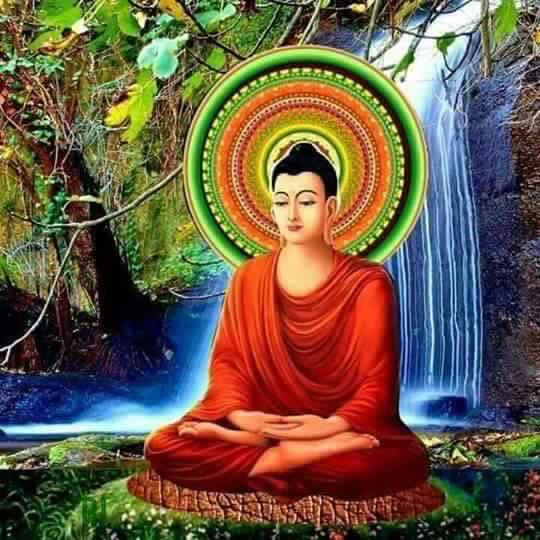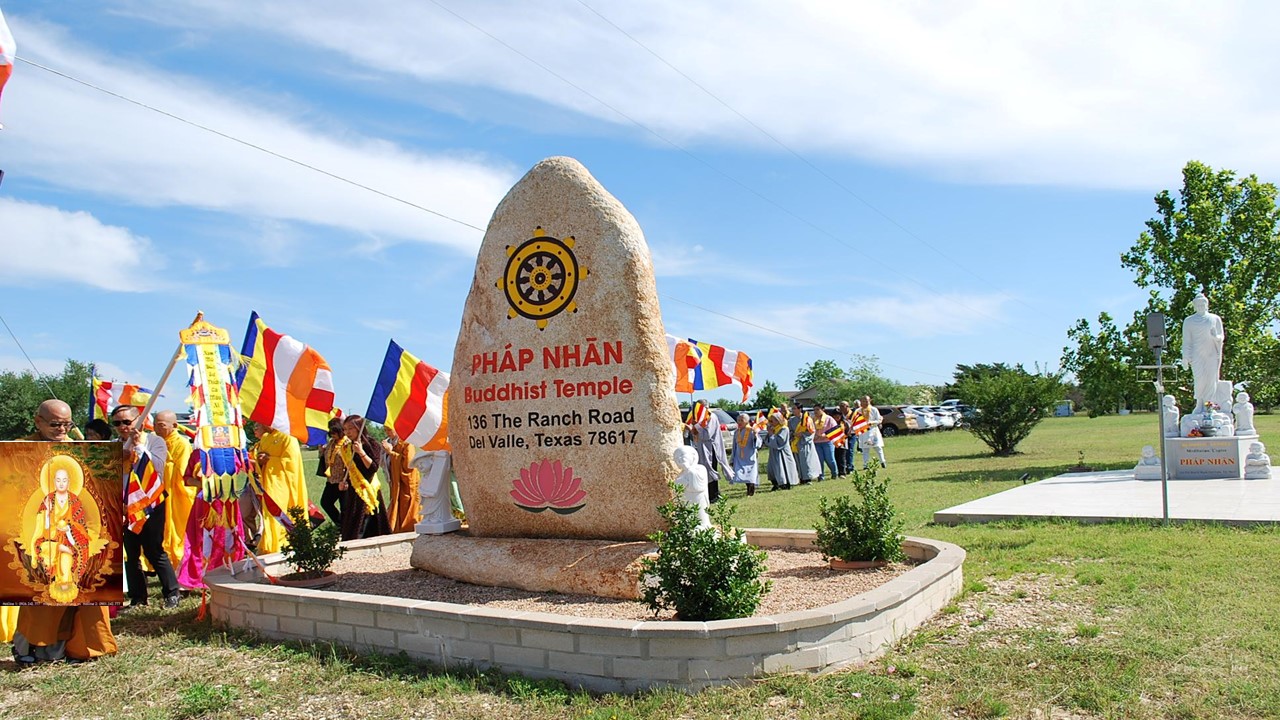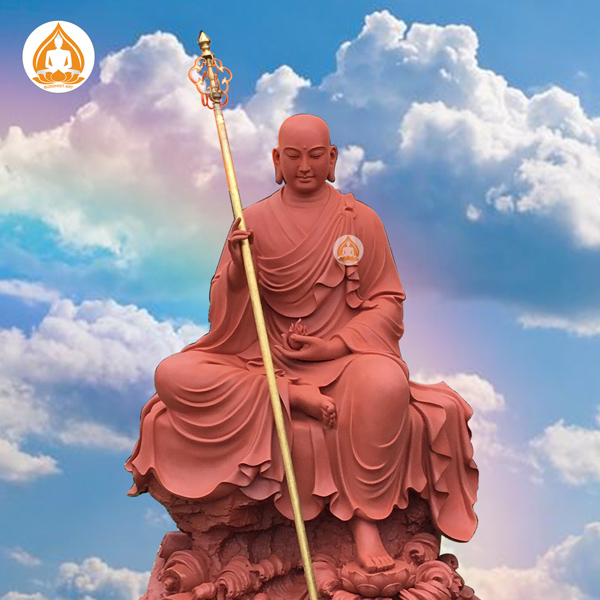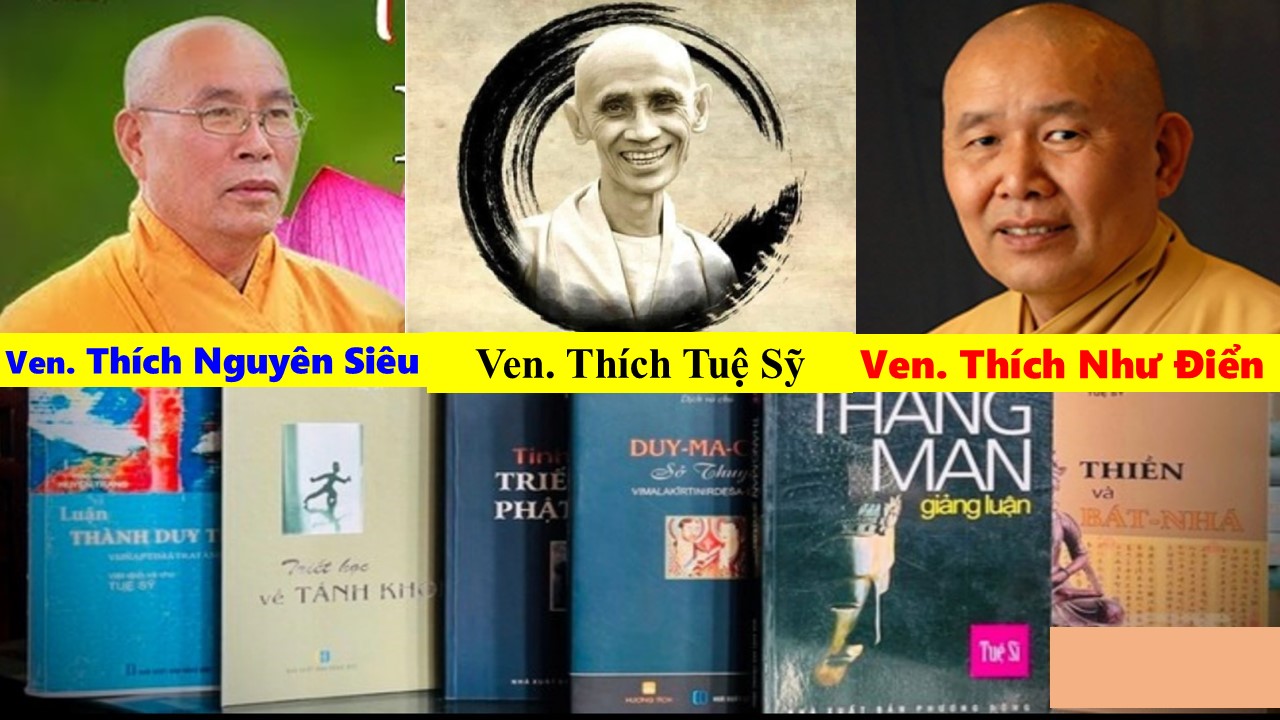THE BUDDHA – THE EMBODIMENT OF PEACE
Upstream of the time more than twenty-six centuries ago, a historical and actual human being in the flesh was born in the world, about 624 BC in Lumbini of ancient India, present-day Nepal. That person, mainly Sakyamuni Buddha, King of peace, Messenger of peace, Embodiment of peace, was born to bring insight, love, peacefulness and authentic happiness to this world.
According to philosophy of Brāhmaṇism as well as philosophies of other religions, humans are considered to have a very low position while a Brāhma, a creator or a god is considered to occupy a supreme position. Conversely, Buddhism always dignifies human beings as occupying the topmost position. Only human beings have the capacity to mindfully, steadily, and awakeningly embark on the path of peaceful joy and happiness. Apart from people, there are no beings on earth with the ability to replace and undertake such a noble task.
Such a person that is motivated by high and good ideals is considered as the person of transforming Karma, transformation from common to holy, from bad to good, from evil to good, from suffering to joyfulness, happiness, etc. We know Buddha means the Awakened One or the Enlightened One. Wherever a person lives mindfully and awakeningly in his or her daily life, there the person will be an incarnate Buddha, that is to say, each of us that always dwells in the light of loving-kindness, compassion and wisdom of the World-Honored One. Such a person can bring peace to living things and living beings.
When Prince Siddhārtha was born, he took his first steps on lotus[1] flowers, his right finger raised up to the sky, his left finger pointed down to the earth, and said: “All over the world, of all beings, only (Atman in Sanskrit, Atta in Pāli language, meaning Ego or Self), or person, or human is uppermost, although all living beings have Buddha-nature.”[2] According to Buddhist thought, first of all, Atman, indicating Human does not refer to a supreme god or a Brahma. Human that is written here refers mainly to the Enlightened One, Sakyamuni Buddha, the Embodiment of Peace, who has the ability to overcome all sorrow, misery and suffering, to bring joyfulness, happiness and peace to the many. “A uniquely sentient being, an extraordinary person, appears in the world, out of peacefulness for the many, out of happiness for the many, out of peacefulness and happiness for gods and human beings – that being is mainly Sakyamuni Buddha.”[3]
Learning the history of Buddhism, we know that the Buddha’s life, which is the embodiment of love, of peacefulness, and of freedom, is always connected closely with living beings and the natural environment. The Buddha, who was born under the foot of Ashoka (sorrowless) tree in Lumbini, obtained enlightenment under the root of Bodhi tree in Bodhgaya, preached the First Sermon (Dhammacakkappavattana Sutta) to the five brothers of Kondanna in Deer park (Migadàya, Sarnath), and passed away under two Sala trees in Kusinàra.
Depending on the natural environment to protect, to nurture and to water the seeds of love into peaceful minds for all beings, the Buddha, along with his disciples, set out to turn the Dharma Wheel in motion and to spread it all over the world, bringing flowers and fruits of love, insight and authentic peace, not only to people and animals, but also to plants, trees, forests, mountains, soils, rocks, rivers, canals, ponds, lakes, the ocean, etc. – all beings on earth.
Indeed, when we have enough favorable conditions to learn and to practice the teachings of the Buddha, we shall certainly live our joyful and happy lives in every second and every minute of our existence. It is for the reason that in ancient times as well as in the present time, wherever the Buddha and his disciples appear to propagate the Dharma and to benefit sentient beings, in that place, joyfulness and peace were brought forth for all living things and living beings all around the planet. In the Dhammapada, verse No. 98 states:
“Whether in a village or in a mountain forest,
Or in a valley or on a high hill,
Wherever an Arhat resides,
What countless delight there is!”
Arhat (Holy One) is a cultivated, enlightened and liberated practitioner who leads a life of joyfulness and happiness and has the ability to dedicate flowers and fruits of peacefulness and happiness to all living things and living beings. Thus, we each are an Arhat, we each are a future Buddha and we each are a tranquil Dharma practitioner in order to bring the substance of love and understanding to the many. Doing so, we can contribute to building a realm of paradise and utmost bliss right here and now in the world.
It is therefore true that wherever Buddhism and its tenets are spread, wherever the Buddha and his disciples go to propagate the Dharma, there local people are always tranquil and peaceful in both their bodies and minds, and with their families, borough, village and country. Since ancient Buddhism as well as modern Buddhism has never caused religious war nor shed a drop of blood for anyone, it has always brought peace to all insentient and sentient beings. If everyone practices and rightly applies to the Buddha’s teachings in their daily lives, peaceful joy and happiness will certainly be manifested and instilled, and softly cool their bodies and minds.
Studying his teachings, we know during forty-five years of spreading the Dharma and saving sentient beings, the Buddha preached and taught his disciples many tenets, but that all of his teachings embrace a few main purposes, which are “Suffering, the origin of suffering, the transformation of suffering, that is to say, happiness and the path leading to the transformation of suffering, bringing about joyfulness and happiness to the many all around the planet.”[4]
This is why the Buddha is respected by the world through ten noble titles as follows: “The Buddha, who is the leading Teacher of our peaceful and noble spirituality, is the most worthy One to be made offerings, is the One of understanding and love, is the One having enough virtue of conduct and insight, is the One attaining perfectly peaceful joyfulness and freedom, is the One penetrating the world, is the One having the ability to subdue people, is the Master of both gods and humans, is the fully-enlightened and awakened One, and is the One to be revered and respected by the world.”[5]
During forty-five years, the real and useful teachings of the Buddha have been called the Dharma.
“The Dharma that is well preached by the World-Honored One
is very practical in the present,
has value beyond time,
has the ability to transform one’s body and mind,
has the ability to extinguish the defilements of desire, anger, delusion, pride, doubt, wrong view, etc.
Taking refuge in the Buddha Dhamma, a wise person, who can also cultivate oneself through practice
comprehends the Dhamma, comes and sees, comes and hears, comes and understands, comes and practices,
comes and enjoys flowers and fruits of peacefulness and liberation right here and right now in the present life.”[6]
Owing to having enough good conditions to approach Buddhism and to become disciples of the World-Honored One, we are fortunate to have many opportunities to practice the Dharma in particular through the five conscious trainings below:
- The first awakening training
“The first awakening training is that we respect all living beings’ lives, including humans, animals, even plants, trees, flowers, leaves, soils, rocks, etc. We do not kill, chop, burn, and destroy forests, mountains, rivers, streams, ponds, lakes, the open sea, etc. Practicing the first awakening thing means we are aware to take care to nurture our love toward all living beings, we contribute to protecting the environment and the lives of living things and living beings, and contribute to building the green, clean and beautiful planet.
- The second awakening training
The second awakening training is that we respect private and public assets, heritages, minerals, and forest products, including gold, silver, gems, sewing needles, blades of grass, bells, wooden bells, timbers, etc. We do not steal and do not appropriate others’ belongings. Practicing the second awakening training means we are aware to spread our hearts of alms-giving toward the poor, the lonely, and the needy. We exploit the sources of the natural resources in moderation so that generations of our descendants can continue to depend on them, and we contribute to conserving, maintaining, and developing virtue, wealth and prosperity for our family and for the country.
- The third awakening training
The third awakening training is that we respect the integrity of the family, including spouses and children. We do not sexually abuse children, do not violate other people’s chastity, and only have sexual relations with our lawful spouse. Practicing the third awakening training means that we are aware to protect the happiness of our parents, spouses and children; we contribute to bringing peacefulness, feelings of joy and good repute to our family, relatives, village and society.
In order to connect the lineage of the clan temple, lay Buddhists should marry and have children and grandchildren. In order to continue the lineage of the sages and to inherit, descend, light up the torch of the Dharma and light up that of love, monastic Buddhists must spare much time to take care of cultivation, study, meditation, the spread of the Dharma and the help of many people. Those who take up the monastic life in order to live a calm and pure life must not be bound by ties to family and children.
The fourth awakening training is that we respect the truth and have estimable respect for everyone, including our grandparents, parents, teachers, friends, etc. We who do not tell a lie do not speak an embellishing word,[7]do not speak a piercing word,[8]do not speak a rough word, do not speak vague and unclear information, do not speak aspiring and avaricious words, do not speak words of creating dissension, discord and disharmony,[9]etc.
Practicing the fourth awakening training means we are awake to say words of the truth, the right, those of confidence, harmony, reconciliation and gentleness, those of affection, softness, sweetness, easiness of hearing, and easiness of love, words of the useful value of building and bringing faith, prestige, harmony, solidarity, and love of authentic brotherhood and sisterhood to ourselves, to the others, to family, to relatives, and to the larger community of the world.
- 5. The fifth awakening training
The fifth awakening training is that we respect peacefulness, tranquility, quietness, steadiness, and carefreeness for the many, including us, our relatives, beloved ones, and neighbors. We do not drink alcoholic drinks, do not smoke, do not watch and see depraved films, internets, pictures, and photographs; especially we absolutely do not use opium and drugs.
Practicing the fifth awakening thing means that we do not violate the above awakening things. We who cultivate the awakening things mindfully are careful to protect our healthy and wholesome bodies, our perspicacious and lucid minds for ourselves and for others. We contribute to building and bringing prestige and confidence of peacefulness and happiness to our native land and homeland.
By consistently practicing the five above awakening things, we not only help ourselves, but also help innumerable living things and living beings on this planet. We contribute to protecting the environment and habitat for this earth. Through our practice, we can bring flowers and fruits of authentic peacefulness, happiness, and peace to the world of humankind today.”[10]
Clearly understanding so, we live very tranquilly in the present, and very peacefully in the future. We live very gently and leisurely. Dwelling stably in the Dharma of the World- Honored One, we live without any fear and worry. Although life is impermanent, although birth, agedness, disease and death occur in our life in any circumstance, at any moment, our bodies and minds are still tranquil, leisurely and carefree.
“Though our life is impermanent,
Despite birth, old age, disease and death,
We who have already found the peaceful way,
Do not have worry and fear any longer.[11]”
We have already found the peaceful way, that is to say, we choose, practice and apply a training method consistent with the Buddha’s teachings with Right View, Right Thought, Right Speech, Right Action, Right Livelihood, Right Effort, Right Mindfulness and Right Concentration in our day-to-day life. As people living consciously, we cultivate, learn and practice the Buddha’s teaching steadily. We enjoy and taste the peaceful Dharma while the fragrance of joyful flavor and happiness is imbued and freshly pervades our bodies and minds. From here, we can contribute to bringing authentic peace to every place.
“The scent of flowers cannot blow against the wind,
but the fragrance of virtuous person which flows against the wind pervades all directions.”
(Dhammapada, verse No. 54)
A Virtuous person, who is a cultivated practitioner, leads a life of tranquil joy and happiness, steadiness and leisure. This person has the ability to bring authentic peace to himself and to others right in this life. Indeed, the perfume of his peacefulness and deliverance brightly shines and pervades all directions. A Virtuous person may be a present Buddha as well as a future Buddha, or may be each of us vowing to go on the path of peacefulness and spiritual emancipation, vowing to light up the light of love, vowing to light up the light of peace for the many, and vowing to widen peaceful thoughts, peaceful words and peaceful doings to bring flowers and fruits of love and peace to the world.
When understanding and doing so, we each are a messenger of peace, we each are a Buddha of peace, and each of us is the personification of peace for everywhere and every place. Peace is authentically present for oneself and for others when we each apply, practice and dwell solidly in the Dharma of the World-Honoured One. We each can enjoy the scent and taste of peace and freedom right here and right now in the present life. From here, we can contribute to building every person of happiness, every family of joyful quiet, society of tranquility and prosperousness on over the planet.
Therefore, whether we are lay Buddhists or monastic Buddhists, whether we are Buddhists or non-Buddhists, we are deeply aware that we vow together to flow like a river, to fly like a swarm of bees, vow together to go on the path of peace, and vow together to nurture our hearts of loving-kindness and compassion so that we can contribute to bringing tranquil joyfulness and happiness to the many.
Today, learning and recalling the qualities of loving-kindness, compassion and wisdom of Lord Sakyamuni Buddha – the embodiment of peace, we vow to arouse and develop the seeds of love and understanding, joyful tranquility and happiness in our peacefully conscious minds out of the benefit for ourselves and for many people right in this life.
In the atmosphere of solemnity, ceremonial, warmth and serenity, many Vietnamese Buddhist pagodas in America, Canada, Australia and Vietnam have been fortunate enough to have good conditions to enable them to invite the Jade Buddha Statue symbolizing religion of world peace to come to be displayed at the Temple for about a week or ten days. Thus both Buddhists or non-Buddhists have had a chance to admire and pay homage to the respected statue in order to remind each of us to together light up the torch of love, together light up that of peace, and together tighten brotherhood and sisterhood to bring joyful tranquility and happiness to oneself and others right in this life.
May all of you reside in and be imbued with the peaceful Dharma of the World-Honored One to cultivate and water the seeds of love and peace out of the benefit to all living things and living beings.
Namo the Original Master Sakyamuni Buddhaya
By Ven. Thích Trừng Sỹ
[1] Lotus symbolizes the purity. Living in the world, but the Buddha is not polluted by the world. He brings authentic peace, peacefulness, and happiness to the many right in this life.
[2] See Àgama Sutras and http://www.thuvienhoasen.org/phatdan-92.htm
[3] See Anguttara Nikàya and http://thuvienhoasen.org/tangchi01-0114.htm
[4] See S. V. 421-2; CDB. V. 1844-5.
[5] See http://www.quangduc.com/luan/25thanhtinh07.html
[6] See http://www.thuvienhoasen.org/ttd-07a.htm
[7] Speaking embellishing word means going to person A we say Person B is good and going to person B we say person A is good, and vice versa. Not speaking embellishing word means we should say the peaceful and helpful matters to everybody.
[8] Speaking piercing word means going to this person we say that person is not good, going to that person we say this person is not good. Not speaking piercing word means we should say the Dharma things to bring happiness to ourselves and to the others right in the world.
[9] See Samyuktāgama Sūtra, N. 785.
[10] See Thich Trung Sy. The Path of Buddhist Education. Ha Noi: Religious Publishing House, 2009, p. 118-134 in Vietnamese.
[11] Zen Master Thich Nhat Hanh’s ceremonial verse.


